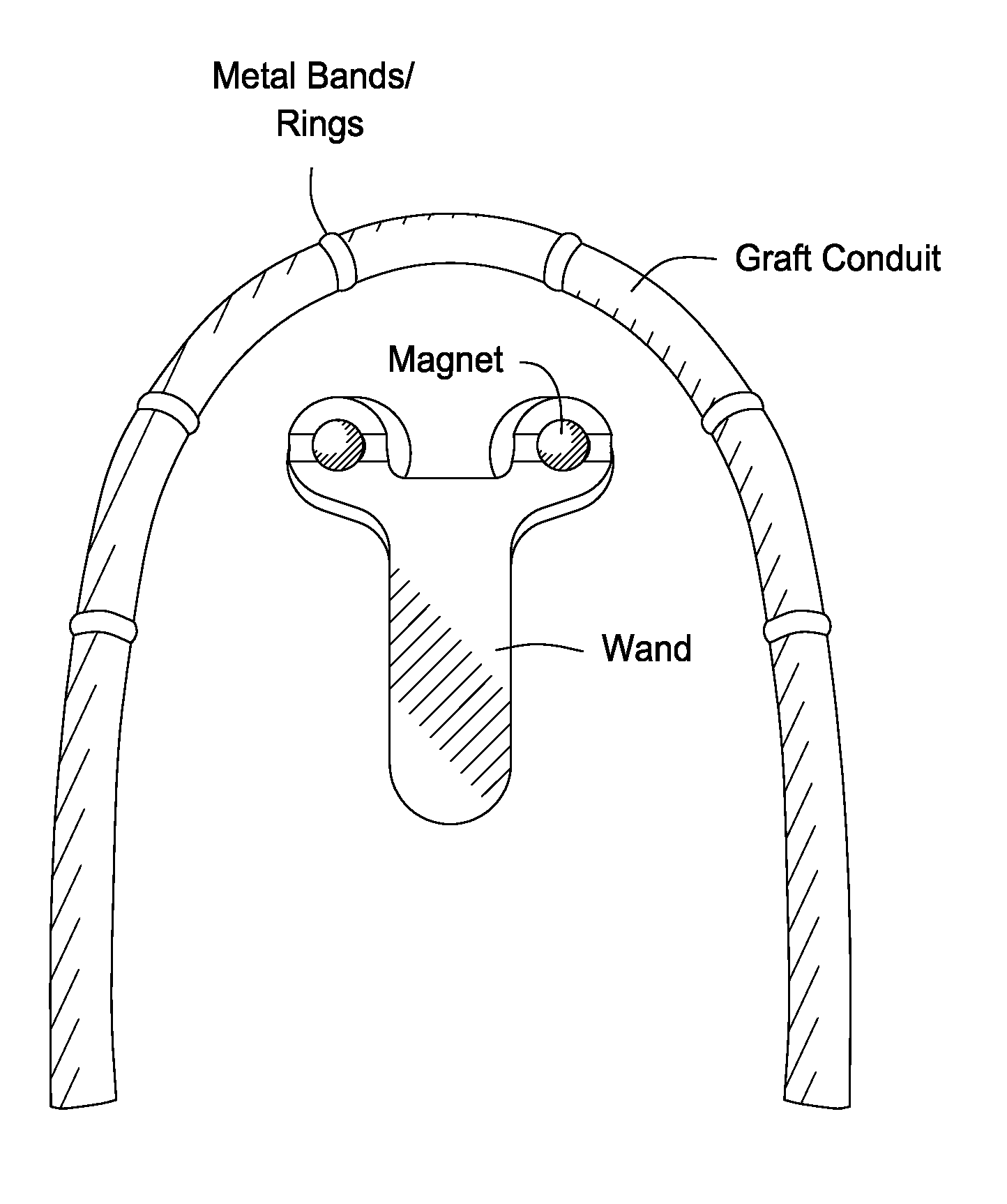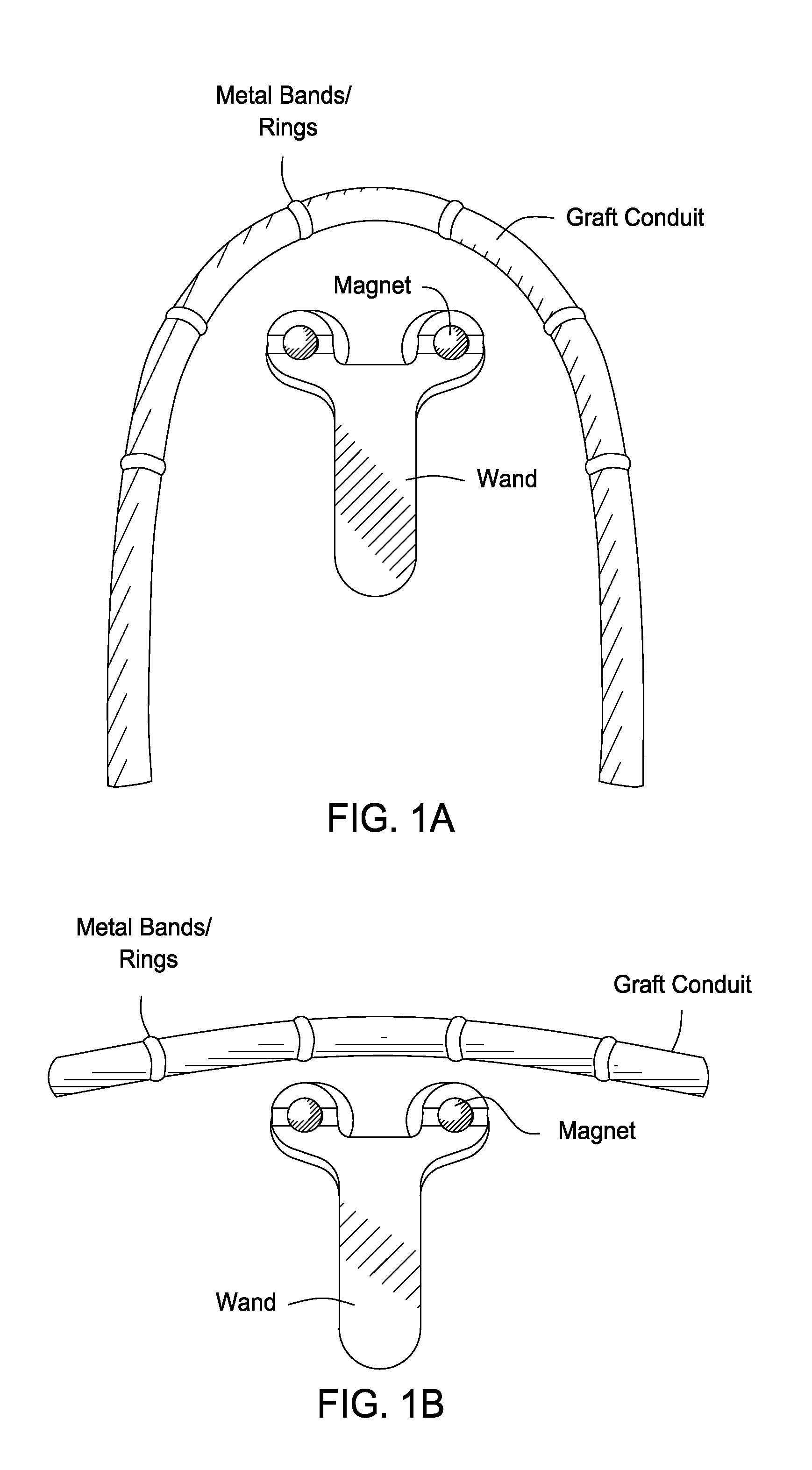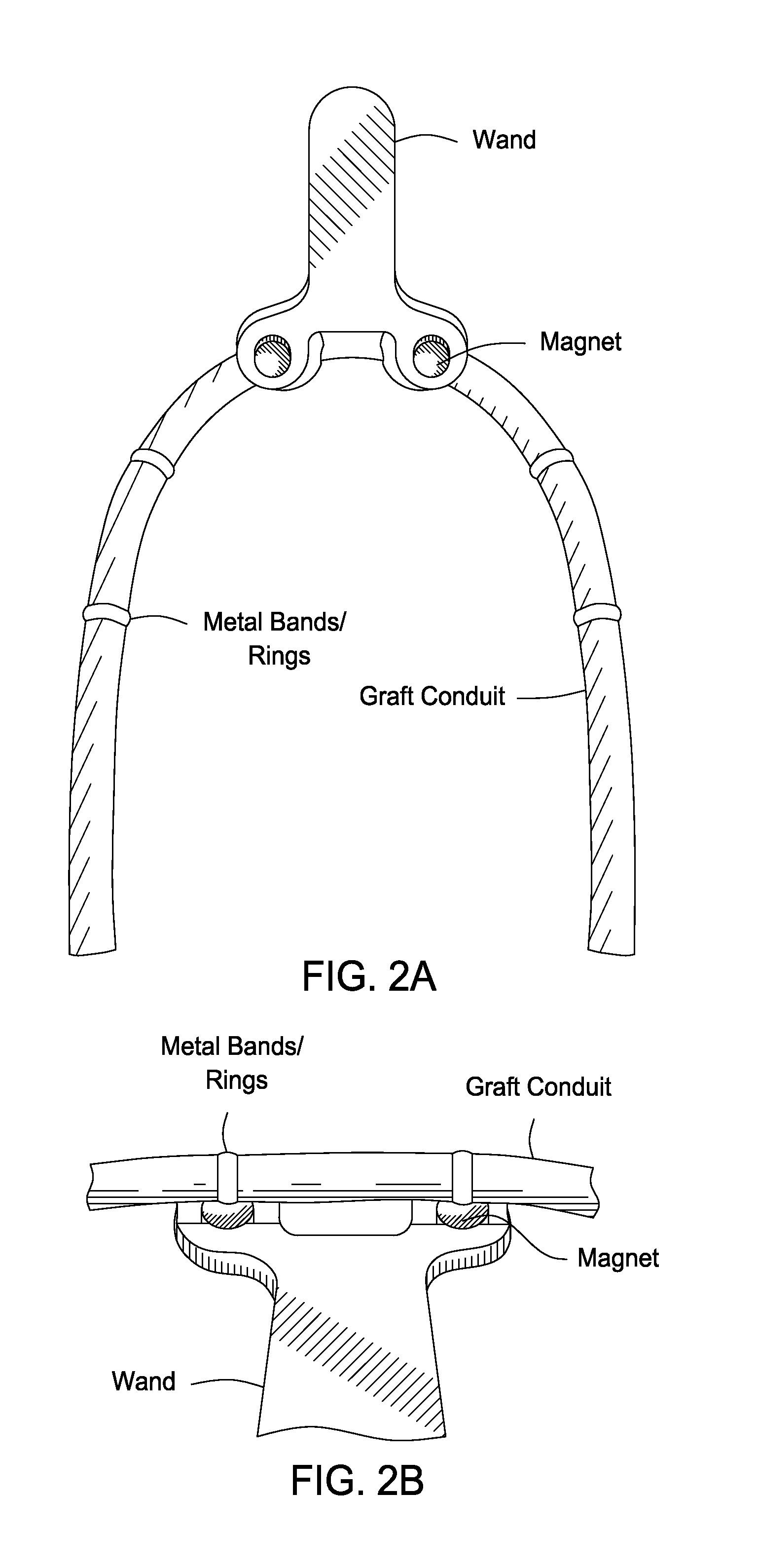Hemodialysis grafts and methods for localizing and identifying the placement of same
a technology for hemodialysis and vascular grafts, which is applied in the field of improving the construction of vascular access grafts, can solve the problems of multiple needle-puncture procedures to access grafts, hematomas can result from uncontrolled bleeding, and damage to grafts, so as to facilitate easy, accurate and reproducible entry and improve the access to an implanted graft device. , the effect of improving the access
- Summary
- Abstract
- Description
- Claims
- Application Information
AI Technical Summary
Benefits of technology
Problems solved by technology
Method used
Image
Examples
example 1
Construction of a Magnetically-Localizable Graft Device
[0137]A prototype magnetically localizable graft device was constructed that had six magnetic bands spaced at 4-cm intervals (center to center) along the graft length. The bands were held in position, and chaffed using ePTFE with approximately 1 to 1½ mm overlap of the edges. The assembled graft contained a single layer of ePTFE tape that was spiral wound onto the graft with minimal overlap of the layer (see, e.g., FIG. 1A, FIG. 1B, FIG. 2A, FIG. 2B, FIG. 2C, FIG. 2D, FIG. 3A, and FIG. 3B).
[0138]The bands were constructed from 0.006-inch thick Series 420 surgical stainless steel. The chaffing utilized was 0.0025-inch thick ePTFE cut into strips of approximately 5 to 6 mm. The top wrap was fabricated from 0.0025-inch thick×½″ wide ePTFE tape. Bands contained 3-mm wide (1 to 5 mm) strips of Series 420 surgical stainless steel wound to produce a double layer ring of material with approximately 10% overlap.
[0139]The magnetic detect...
example 2
Construction of a Magnetically-Localizable Autogenous Venous Conduit
[0141]In certain situations, it may be desirable to employ an autogenous venous conduit (AVC) or a biological homograft in place of a synthetic AVG device. In such instances, the devices and localization methods of the present invention may readily be adapted for use in detecting and localizing the position of such biological grafts in situ. As shown in FIG. 4, a flexible sleeve is readily fabricated that includes along its length a plurality of metal bands similar to those utilized in the synthetic graft devices described above. The sleeve is fabricated out of a suitable material such as ePTFE, and then slipped over the AVC and secured to the vessel by suturing, bonding, or application of one or more biocompatible surgical adhesives.
[0142]A magnetic detection wand (fabricated such that its magnets correspond in relative dimension to the placement of the metal bands along the length of the graft) is then placed ab...
example 3
Construction of a Detector Wand For Port-a-Cath Devices
[0143]In FIG. 5 and FIG. 6, a conventional port-a-cath device is shown that has been adapted for use in the present localization methods by fabrication of a magnetic detector wand to the corresponding dimensions of the port. In cases where the conventional port is fabricated of non-magnetic materials, the device may be readily modified to contain a metal ring fixably attached to, and defining the outer circumference of, the port. A correspondingly-shaped detector wand is then fabricated to contain one or more magnets operably positioned to facilitate detection of the port in situ. Alternatively, if the port is already fabricated from a magnetic material (such as surgical stainless steel, for example) the device may be detected simply by fabrication of an appropriately sized detector magnet and / or wand that may be wanded over the patient's skin until the embedded port device is localized by the magnet's attraction to the metal p...
PUM
 Login to View More
Login to View More Abstract
Description
Claims
Application Information
 Login to View More
Login to View More - R&D
- Intellectual Property
- Life Sciences
- Materials
- Tech Scout
- Unparalleled Data Quality
- Higher Quality Content
- 60% Fewer Hallucinations
Browse by: Latest US Patents, China's latest patents, Technical Efficacy Thesaurus, Application Domain, Technology Topic, Popular Technical Reports.
© 2025 PatSnap. All rights reserved.Legal|Privacy policy|Modern Slavery Act Transparency Statement|Sitemap|About US| Contact US: help@patsnap.com



